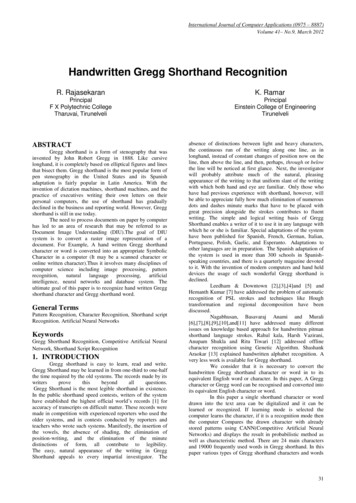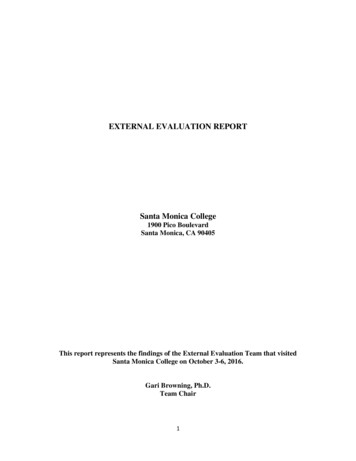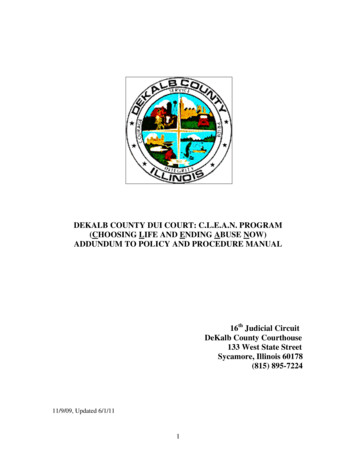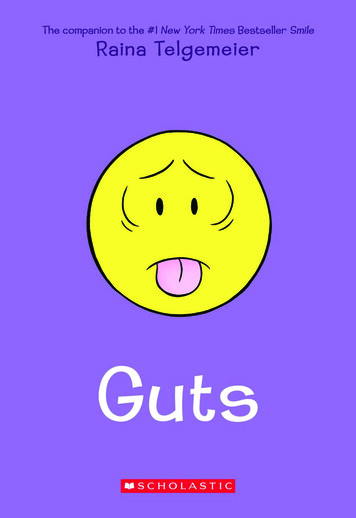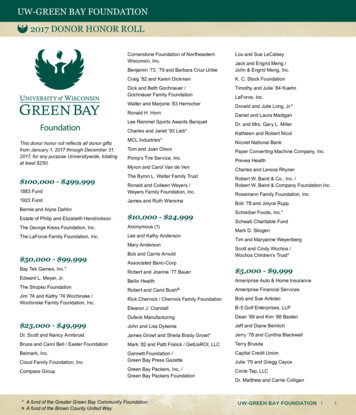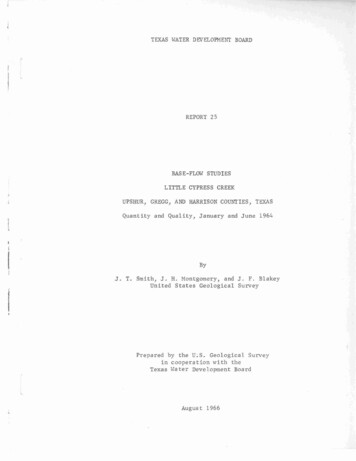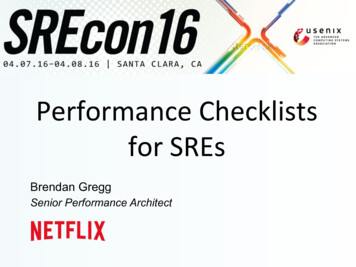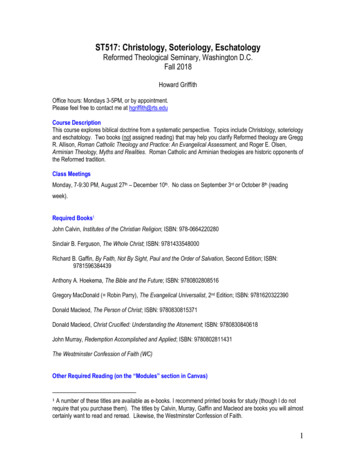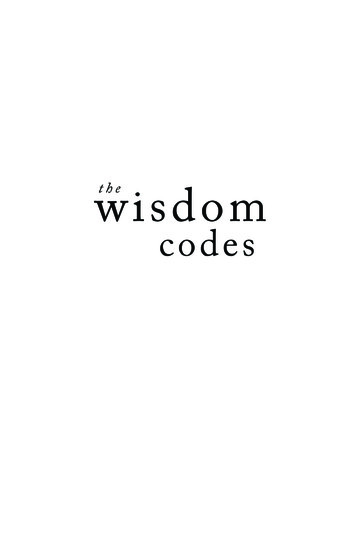
Transcription
ALSO BY GREGG BR ADENBooksHuman by Design/The Science of Self-EmpowermentResilience from the HeartThe Turning PointDeep TruthThe Divine MatrixFractal TimeThe God CodeSecrets of the Lost Mode of PrayerThe Spontaneous Healing of BeliefThe Isaiah Effect*Audio ProgramsAn Ancient Magical Prayer (with Deepak Chopra)The Turning PointAwakening the Power of a Modern GodDeep TruthThe Divine MatrixThe Divine Name (with Jonathan Goldman)Fractal TimeThe Gregg Braden Audio Collection*Speaking the Lost Language of GodThe Spontaneous Healing of BeliefUnleashing the Power of the God CodeDVDThe Science of Miracles*All of the above are available from Hay House except items marked with anasterisk.Please visit:Hay House USA: www.hayhouse.com Hay House Australia: www.hayhouse.com.auHay House UK: www.hayhouse.co.ukHay House India: www.hayhouse.co.in
HAY HOUSE, INC.Carlsbad, California New York CityLondon Sydney New Delhi
Copyright 2020 by Gregg BradenPublished in the United States by: Hay House, Inc.: www.hayhouse.com Published in Australia by: Hay House Australia Pty. Ltd.: www.hayhouse.com.auPublished in the United Kingdom by: Hay House UK, Ltd.: www.hayhouse.co.ukPublished in India by: Hay House Publishers India: www.hayhouse.co.inCover design: Interior design Bryn Starr BestGrateful acknowledgment is made to the HeartMath Institute for permission to use theirQuick Coherence Technique. Copyright credits for excerpted text may be found on page XX.All rights reserved. No part of this book may be reproduced by any mechanical, photographic, or electronic process, or in the form of a phonographic recording; nor may it be storedin a retrieval system, transmitted, or otherwise be copied for public or private use—other thanfor “fair use” as brief quotations embodied in articles and reviews—without prior writtenpermission of the publisher.The author of this book does not dispense medical advice or prescribe the use of anytechnique as a form of treatment for physical, emotional, or medical problems without theadvice of a physician, either directly or indirectly. The intent of the author is only to offerinformation of a general nature to help you in your quest for emotional, physical, and spiritualwell-being. In the event you use any of the information in this book for yourself, the authorand the publisher assume no responsibility for your actions.Library of Congress Cataloging-in-Publication DataTKHardcover ISBN: 978-1-4019-4934-1e-book ISBN: 978-1-4019-4935-8Audiobook ISBN: 978-1-4019-5690-510 9 8 7 6 5 4 3 2 11st edition, May 2020Printed in the United States of America
CO NTENTSPreface.IntroductionHow to Use the Wisdom CodesThe Words Are the CodesPART 1: PROTECTIONWisdom Code 1: Psalm 91Wisdom Code 2: Buddhist Prayer of RefugeWisdom Code 3: The Lord’s PrayerWisdom Code 4: Gayatri MantraPART 2: FEARWisdom Code 5: Katha UpanishadWisdom Code 6: Pyramid TextsWisdom Code 7: Bhagavad GitaWisdom Code 8: The Gospel of PeacePART 3: LOSSWisdom Code 9: Otagaki RengetsuWisdom Code 10: BuddhaWisdom Code 11: Pavamana MantraPART 4: STRENGTHWisdom Code 12: Beauty PrayerWisdom Code 13: Vedic MantraWisdom Code 14: Psalm 23
PART 5: LOVEWisdom Code 15: Gospel of ThomasPART 6: THE POWER CODESPower Code 1: I WillPower Code 2: I AmPART 7: THE PARABLESParable 1: The Woman and the JarParable 2: The Poison ArrowAcknowledgmentsReferencesPermission CreditsResourcesAbout the Author
A single word has the power to influencethe expression of genes that regulatephysical and emotional stress.— A n dr e w Ne w be r g , M . D. , n e u r o s c i e n t i s t,a n d M a r k R o b e r t Wa l d m a nI know nothing in the worldthat has as much power as a word.— Emily Dick inson, poet
PR EFAC EAlmost universally we use words to comfort ourselvesin times of need. From the Blessing Way prayer used by theNavajo of the American desert Southwest (Diné in theirown tongue) to honor natural order in times of chaos to theOld Testament Priestly Blessing discovered on two tiny silver scrolls dating to nearly 3,000 years ago, world history isfilled with examples of words that have soothed, comforted,and protected us. Individually and collectively, formally andinformally, out loud and under our breath, through the ages,we humans have employed special words to help us navigatethe difficult moments of life.If we think of our creations as the expression of ideas thatlive within us, then our art, film, music, and writing take ona meaning of something more than simple entertainment.Such a relationship between our inner and outer worlds leadsus to view our inspiration as consciousness informing itself—reminding us of our untapped possibilities and potential.From this perspective, the spiritual traditions of the past, andthe words that preserve them, are living examples that reveala timeless communication.In writing The Wisdom Codes, I envisioned a collectionof trusted words that we’ve historically turned to in times ofneed, distilled into an easy-to-read, quick-access, modern-daymanual. This group of revered prayers, mantras, chants, andix
W I SD OM CODE Shymns is designed to provide reassurance, protection, andhealing when life brings danger, hurt, unspeakable loss, andself-doubt to our doorstep. In such times, even the mostwell-meaning support of family and friends often falls shortof finding its way into the dark void of our emotional abyss.In such times, all we may have is ourselves. And ultimately,that’s all we need. Once I understood this simple truth, itmade perfect sense that we already have the power to rewireour brains on demand, and in doing so, to choose—to self-regulate—the way we respond to life’s extremes.Through consciously applying the word codes of the pastto the challenges we face in the moment, we benefit from thewisdom of ancient sages, healers, mystics, and prophets. Indoing so, we’re no longer victims. We are no longer defined byour circumstances but become masters of our destiny.And this is the power of the wisdom codes. In their presence, we are changed. When we speak the words, either outloud or silently to ourselves, something shifts within us. Andthat “something” is where the power of words, chemistry, andneurons converge in a beautiful way. We associate the wordsof the codes with the meaning we give to the words. Thisassociation directs our brain cells (neurons) to connect in aprecise way that harmonizes our biology with the energy ofour emotions. Chemically, we are no longer the same personwe were only moments or hours before. And it’s that difference that opens the door to new ways of thinking, feeling,and acting when it comes to our losses, fears, and betrayals.And while our changes may be subtle and perhaps willeven go unnoticed by those with whom we share our lives, it’sprecisely these changes that gives us the wisdom, confidence,and power to awaken a deeper power within ourselves.x
I NTRO DU CTIO NWe think in words.We speak in words.In the silence of our minds, we hear the word-messagesof our subconscious thoughts repeating at the dizzying rateof 60,000 to 80,000 times each day, according to scientificestimates. And now new evidence suggests that the powerof our words extends far beyond what these statistics haverevealed in the past. Recent studies confirm a theory that wasfirst proposed early in the 20th century: that the words ofour everyday language directly influence the way our brain“wires” itself when it comes to how we think, and even whatwe are capable of thinking about.THE DISCOVERYThe discovery of our word-brain relationship is not theproduct of well-coordinated research in a state-of-the-art laboratory searching for such a mystical-sounding link. Ratherit’s the result of an unexpected realization that emerged froman unplanned teaching assignment between 1937 and 1938.It was during this time that American linguist Benjamin LeeWhorf found himself substitute instructing a graduate-levelclass in Native American linguistics.xi
W I SD OM CODE SWhile filling in for a colleague who was on a year-longsabbatical, Whorf recognized a previously overlooked nuancein the language of the North American Hopi. Speakers ofthis language describe the events of everyday life withoutusing—or even referencing—the experience of time. In otherwords, the Hopi language uses words that describe the present moment, and what’s happening in the moment, with nowords to directly describe the past or future.It was this paradigm-altering use of language that ledWhorf to the discovery that our words influence the wayour neurons connect—a discovery that shattered the scientific beliefs of his day, and remains controversial, as well asacclaimed, today.SPEAKING THE MOMENTThe indigenous experience of seeing lightning in the skyis a perfect illustration of Whorf ’s discovery. When the Hopirefer to lightning, their language describes it as a verb that’soccurring, rather than a noun for something that exists. Theysay the equivalent of “It is lightning-ing,” indicating that thelightning is in a state of being, rather than observing “the lightning” as a natural object.In a similar way, when considering the ocean, rather thandescribing a single wave as the noun the wave or a wave, theHopi see the wave as part of an all-inclusive system that ispresent, alive, and happening in the moment. Their thinking is reflected in the language that describes the experience,and they say, “The wave is wav-ing,” just as a lightning bolt is“lightning-ing.”xii
IntroductionTHE WORDS OF A LIVING UNIVERSEIt’s these word structures that Whorf believed wereresponsible for the harmonious way the Hopi think of themselves, structure their lives, and view their relationship to thecosmos. When considering the entirety of creation, for example, they see a living universe of connectivity that emergedlong ago from a primal state of harmony. Within this systemof oneness, the Hopi view cooperation between people andwithin nature as everyday expressions of a universal harmonythat extends throughout the cosmos.This life-affirming way of thinking stands in sharp contrast to the conventional scientific perspective that describesthe universe as a “dead” system that emerged from a series ofrandom and unbelievably fortunate cosmic events long ago.From this worldview of lucky biology, mainstream scienceattributes our origin, and continued existence, to the successof competition and what 19th-century naturalist CharlesDarwin called survival of the strongest—a premise that thebest science of the 21st century now tells us simply is not true.New discoveries in biology, as well as other life sciences, nowreveal that cooperation, not competition, is the fundamentalrule of nature.WORDS CAN CHANGE YOUR BRAINThe implications of the word-life relationship are profound. It appears that the language we use—the words wechoose to describe ourselves and share our thoughts, feelings, emotions, and beliefs—actually forms the framework for the unityor separation that we experience when we think and solve theproblems of everyday life.xiii
W I SD OM CODE SThese proven word-brain relationships now have openedthe door to an even deeper question: Is it possible that bychoosing specific words to address the challenges in our liveswe could rewire our brains to discover new ways of solving ourproblems? In other words, can the conscious choice of wordsand word patterns help us actually to think and feel differentlyin times of crisis, trauma, loss, and need? The short answeris yes. The long answer is what the rest of this book is allabout. As we’ll see in the pages that follow, our ancestors heldprecisely this belief. And beyond simply acknowledging sucha powerful bridge between words and biology, they appliedtheir understanding as word codes in their times of need.In the recent book Words Can Change Your Brain, physician Andrew Newberg, M.D., and co-author Mark Waldmanecho Whorf ’s ideas and tell us precisely what the word-brainconnection means. They describe this relationship clearly,stating: “A single word has the power to influence the expression of genes that regulate physical and emotional stress.”Additionally, Newberg and Waldman reveal a relationship between our words and our body that goes beyond thelevel of our genes, to impact our perception of reality itself.The phenomenon begins in the thalamus, a small gland nearthe center of the brain that relays sensory information to theareas of the brain that interpret, and then act upon, the signalsto form our perceptions of the world. They write, “Over timethe structure of your thalamus will also change in response toyour conscious words, thoughts, and feelings, and we believethat the thalamic changes affect the way in which you perceive reality.”The discoveries they report on have added to a growingbody of evidence revealing the power of words and how wemay use them to help us in difficult moments.xiv
IntroductionTHE WISDOM CODESWhorf ’s 20th-century discoveries and recent scientificrevelations in the fields of neuroscience and biology are telling us the same story. They point to the same relationship.Our words influence the chemistry in our bodies, the neuronsin our brains, and the way our neurons connect and “fire” todetermine: How we think of ourselves and solveour problemsWhat we are even capable of thinking aboutThese insights give new meaning to the chants, hymns,prayers, and mantras used in the traditions of the past. Forthousands of years, precise words and ritual phrases have beenspoken from father to son, mother to daughter, shaman toshaman, and healer to healer. And from the time of the earliest writings, these are the messages that were preserved forfuture generations in the sacred scripts and mysterious glyphsthat have withstood the test of time. Today we find the legacyof our ancestors’ efforts in some of the most remote, isolated,and hidd
the universe as a “dead” system that emerged from a series of random and unbelievably fortunate cosmic events long ago. From this worldview of lucky biology, mainstream science attributes our origin, and continued existence, to the success of competition and what 19th-century naturalist Charles
